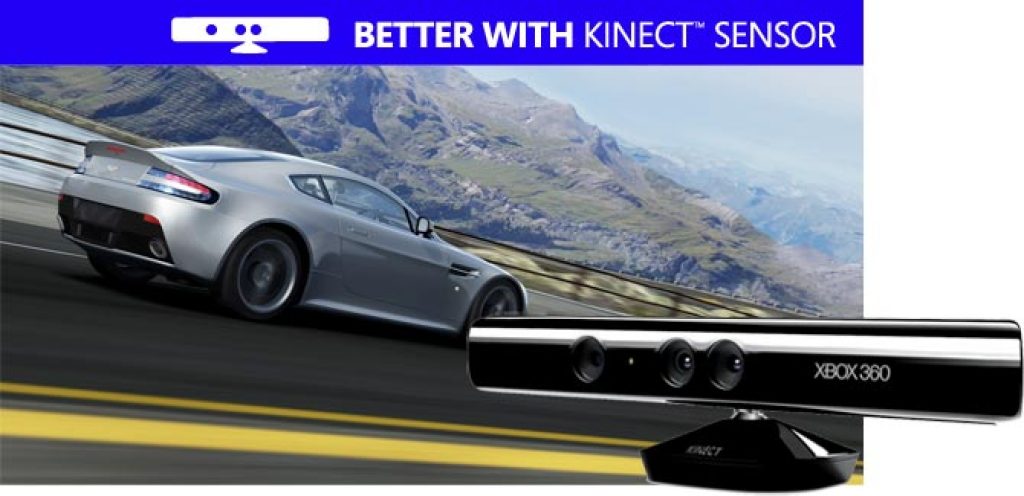While Kinect is an impressive embedded vision hardware achievement, both in an absolute sense and particularly when considering its price tag, the software that harnesses its potential has to date been (at least in this observer's mind) a bit underwhelming. Granted, titles such as Kinect Sports are a lot of fun. But they're…gimmicky. And they're absent the graphical-and-otherwise richness present in other Xbox 360 content, in part I suspect due to the development rush to get first-generation Kinect-cognizant material to market last fall, and in part because developers hadn't optimized their Kinect code sequences and didn't want the overall experience (frame rate, input-to-response latency, etc) to suffer.
Fortunately, the situation is beginning to evolve in a positive direction, reflective of Microsoft's "Better With Kinect" push to broaden gesture interface adoption. Back in late July, as I previously mentioned, Microsoft rolled out the Avatar Kinect technology that it'd previewed at January's Consumer Electronics Show:
Although the Avatar has always reacted to user interface actions you initiate with a controller, and although you've always been able to place it in some games, it hasn't dynamically responded to your body motion…until now, that is. Since last November's Kinect launch, the system has used facial detection to identify users, and it's used body motion detection to animate the torsos and limbs of generic avatar characters in games. Avatar Kinect takes the technology to the next level, not only expanding animation to user-specific Avatars themselves but also animating coarse-grained facial features of those Avatars (not necessarily eyelash-blinks, for example, but eyebrow-raises and smirks).
And this week, Microsoft Studios (as publisher…Turn 10 Studios was the developer) unveiled the 4th generation of its Forza Motorsport racing series. On Monday, long-time Microsoft follower Long Zheng published compelling coverage on his I Started Something blog, focusing on the title's Kinect integration. Below are some choice quotes; hit the above link for the full writeup:
With the foundations of a great game in place, the Kinect integration is like the icing on a cake. Granted the three main areas of Kinect integration – AutoVista, controller-free driving and head tracking are not all equally sweet, there’s enough substance to make Kinect owners appreciate the game even more.
AutoVista is the interactive equivalent to a car showroom in Forza 4. Using the Kinect, one can simply walk around a car (or tilt your head) to explore gorgeous high-resolution renderings for 24 prestigious cars at launch and more from DLCs in the future.
Compared to the controller, interacting with commentary spots is a little more difficult since it requires you to actually hold an arm with accuracy (an issue with many Kinect games), some Kinect-only gestures like opening a door, the trunk and pressing the horn on a steering wheel are details to be appreciated…
From the showroom to the race track, Kinect allows three racing modes: quick race, hot laps and split-screen versus side-by-side with a friend. After driving a couple of laps with the Kinect, it’s obvious why the game’s campaign mode can only be played with the controller.
Even though the game recommends you to sit, the hand sensing works just as well standing up as well. As both acceleration and deceleration is controlled automatically, rotating the imaginary steering wheel using two hands or even one hand is reasonably accurately reflected in the game.
It took a few laps to get used to but I’ve since mastered the art of holding an imaginary steering wheel with no resistance or feedback…
Lastly, the most subtle Kinect integration is also the best in my opinion – head tracking. When enabled (oddly not on by default) and driving with the controller, directing your view ever so slightly to the left and right pans the camera too. This works in both in-car and out.
Because it’s naturally intuitive for drivers to be aware of the vehicles around them and to change the angle of vision at corners, the head tracking provides a subtle hint of refined realism, even if it might not make a noticeable difference in the lap time. I actually think I tackle corners better because of this.
Since the panning effect has to be exaggerated for a TV display, I assume the larger the display the more engaging it is (I played on a 40″ sitting about 1.5m away).


